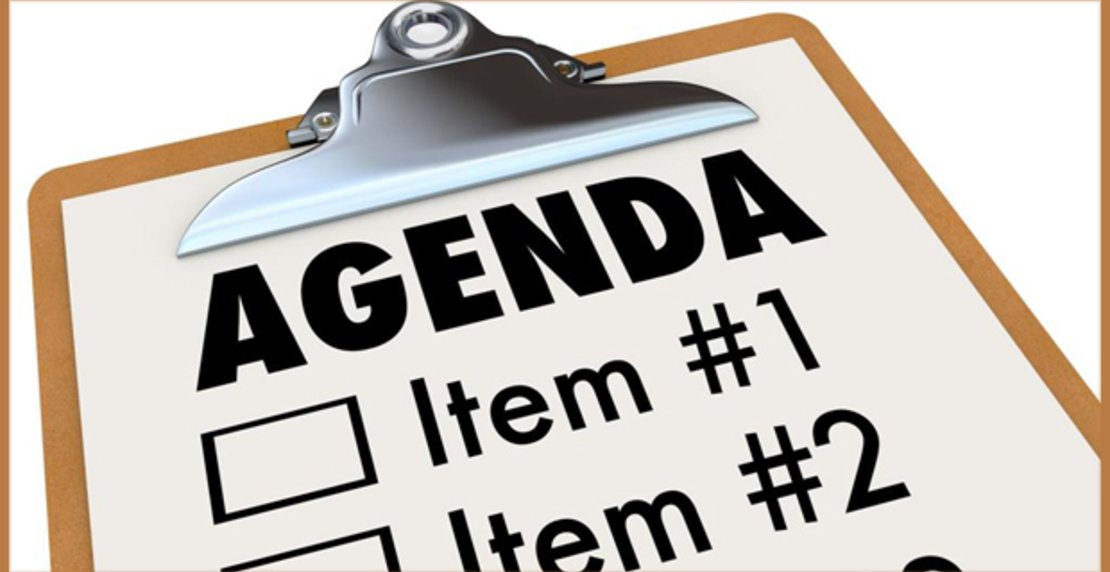
16.1 Introduction
Meetings are extremely important for the growth and success of any organisation. Here's a closer look at the importance of meetings:

1. Meetings often provide the driving force and impetus behind newer and better policies. Discussions across departments often lead to productive results.
2. Meetings also help remind workers of organisational goals and push them to better themselves. Meetings are a good way to hold people accountable for their actions. Sharing updates and accomplishments is a wonderful way to motivate employees; workers realise that all their effort contributes to a collective goal. Workers get motivated because the value of their individual contributions is recognised publicly.
3. Meetings are excellent opportunities to brainstorm and harness the creativity of multiple minds towards improvement of products and services. Brainstorming sessions held with the aid of charts, laptops and visuals help add zing to enthusiasm and energy levels.
4. Group dynamics are set into motion during meetings and this is why effective meetings can do a lot for business. This is an excellent opportunity for better decision-making for two reasons: Decisions are made with everyone's input and secondly, out of creative differences. Differences can often be maximised and transformed into first class decisions. Questions can be answered, doubts can be cleared and issues can be resolved at meetings.
5. Businesses are complex structures and there are numerous issues to resolve. If one person attempts to resolve everything on their own, chances are that they are working with limited inputs. Meetings are forums that provide an opportunity for everyone to broaden their understanding of problems and issues facing the organisation.
6. Meetings are an effective way to resolve conflicts of viewpoints and opinions. It's a good idea to provide a platform to vent out emotion and discuss issues.
Before you schedule a meeting, make sure that you ask the following questions:
. What are the objectives of the meeting? What does the meeting expect to achieve?
. What information will be gained, exchanged or received?
. Who are the attendees and where is the venue?
. What is the timing and duration of the meeting?
16.2 Arrange the Venue
Some meetings will simply be organised through invitation by third parties and, consequently, you will not need to organise the place or venue.
But other times, it will be up to you to decide on a suitable venue for the meeting.
The venue should be a comfortable one and a good size for the number of people that you plan to invite.
Does the room and venue have the right layout? Is it in a suitable area and conveniently located for people who will be expected to attend?
If the location requires complex flight arrangements, some attendees may not be able to attend.
Your boss may want a casual setting, but you can still opt for formal dress code.
Key Tips for choosing the Right Venue for a Business Meeting
1. Ascertain if the venue has adequate car parking or valet assisted parking. You don't want attendees to miss the meeting due to parking issues.
2. If you are offering hotel accommodation for your guests, check to see if the venue is located close to the hotel or at walking distance.
3. The choice of venue should be in alignment with the values and ethics of your company, as well as with the objective of the meeting. A recreational venue may be excellent for annual conferences while an airport property may be ideal for high-level, brief meetings intended for global attendees.
4. Pay attention to seating arrangements. Before the meeting, stand at various points in the room and see if you are able to see the visuals and hear the audio clearly.
5. Estimate the number of chairs, tables, pens and pads that you may need. If the meeting includes families, check the babysitting services and room facilities.
6. Ensure that the function room has all of the technology you will need, i.e. screen, television, power sockets, microphones and so on. You will need enough room for an overhead projector, there is nothing less professional than people huddling around a laptop and having to squint at a presentation.
7. Check to see if the venue has Wi-Fi availability and charging stations.
8. Refreshments, snacks and meals are another major area of concern. This could include water, coffee and juices with some assorted cakes or biscuits. Verify the timings of the meeting and choose the best snack options that should be available.
16.3 Attendee Profile
Ensure that you inform the attendees well in advance.
The objectives, duration and dates should be clearly mentioned. This way, prospective attendees can plan their schedules well in advance.
Make sure that you only invite people who are relevant to the meeting. If your company is trying to resolve an issue, invite people who can provide useful input. Similarly, if you want information, invite those who possess the requisite expertise. If you invite people who cannot contribute to the meeting in any important way, they will tend to view the meeting as a waste of their time.
The purpose of the meeting plays a crucial part in deciding who the attendees should be. Meetings with vague objectives tend to be a waste of time, effort and resources. Circulate all updates or information about changes in plans or schedules. You will also have to get people to RSVP by a specific date - these are usually followed up with a reminder. Your agenda should include a full list of attendees, a summary of discussions, how long the interval will be and any important decisions that need to be made, actions to be taken and due dates of pending problems that need to be fixed.
Make sure that you have a copy of the agenda and targets that you can give to everybody attending so they can refresh their memory at a later date. List out the agenda and important points in the form of bullet points, which is easy to follow. Remember to follow up on all the points before the meeting so that you have time and space to
handle any changes.
Tips to Ensure Effective Meetings
1. Lay out the rules firmly before the commencement of the meeting. For example, disallow speakers from taking up more than their share of allotted time. Excess talking derails the purpose of a meeting and prevents other people from participating to the full extent.
2. Make it a rule that mobile phones, iPads, etc. will be disallowed during the meeting. These gadgets disrupt meetings and you will often find people surfing the net or playing games when they are actually supposed to concentrate on the subject under discussion.
3. It is also a good idea to write down a one-page summary of the points and issues to be covered at the meeting. Distribute this to attendees beforehand to prevent the spread of rumours and speculation before the meeting.
4. Keep the topic relevant and prevent time-wasting digressions to other topics. Encourage participation from all attendees and prevent a handful of participants from monopolising the meeting.
5. Relevant questions need to be answered before you move on to the next topic.
6. The atmosphere should be friendly, communicative and interactive. Authoritarian and 'strict' meetings do not accomplish their purpose.
7. Try to diversify the topics on the agenda so that attendees do not get bored. Meetings should usually not exceed 60 minutes. If the meeting requires a longer time, then remember to schedule breaks. Meetings should not consist of just reading PowerPoint presentations. The crux of an effective meeting depends on discussions and exchange of ideas.
16.4 The Importance of Starting on Time

Firstly, analyse if the meeting is really required and if it is going to achieve its purpose.
If key participants are unable to attend, then it's preferable to postpone the meeting altogether.Meetings should always begin on time as the idea must be to respect everyone's time. Welcome everybody who attends the meeting and remember to thank them for their time. As a precaution, email the Google map and directions to attendees one day prior.
Go through a brief review of your agenda at the start of the meeting, this will give participants a chance to understand topics and get their brains on the right track. Record the meeting so you can refer back to it at a later date. This record is referred to as the 'minutes of the meeting' and is very useful for future references. Other attendees may also want a copy of the minutes of the meeting. Make sure that tasks, assignments and deadlines are documented and sent out to all attendees. This minimises the risk of misunderstandings and miscommunication.
Represent the attitude and energy you wish attendees to display at the meeting. You should always clarify your role with your boss before the meeting to avoid any confusion. Many PAs show active participation in meetings while others remain in the background and see to the smooth running of activities.
16.5 The Importance of Agendas for Meetings

Try to send a full agenda at least 1 week before the meeting to all attendees. Agendas are crucial to the success of meetings for several reasons:
. They clarify objectives so that people can understand the meeting, purpose and objectives to be covered by the meeting.
. Distribute the agenda prior to the event so everybody else can plan or prepare. Prior distribution of agendas helps participants prepare their contribution well beforehand.
. The agenda provides people with a focus of direction in the meeting and afterwards.
Always include:
. Title of event
. Type of meeting
. Times/date/location
. Planned discussions
. Names of people responsible for covering specific activities on the agenda
. Approvals or amendments expected
. Record of any reports or statistics to back up agenda
. Proposals, documents and a full summary of the discussion held.
If there is a lot to discuss, you can consider making a time-table for allotted subjects. This could improve the flow of your meeting and make it more interactive. When the meeting is over, you should double-check everything to make sure everything has been noted correctly whilst your memory is still fresh.
Make an internal memo detailing all topics that were covered as there could be a requirement to follow-up after the event. Mark down what was covered, resolved and what needs to be done to clarify things moving forward.
Work out a budget with your boss at the start of your campaign. Ask everybody to turn their phones
off or keep them on silent when the meeting begins.
Activity 1 - Practise Creating Meeting Agendas
Estimated time: 10-15 minutes
You just learned about meetings and how important they are to the success and growth of an organisation. As a personal assistant, you will be responsible for booking meetings, arranging venues and planning itineraries.
While it may seem easy to plan a meeting, there are quite a few things that you need to take into consideration. To practise, book a fictitious meeting and plan a full agenda; what are some things that are important to include?
FACT
The average office worker spends 4 hours per week in meetings
Source: meetingbooster.com
Activity 2 - Planning a Meeting Venue
Estimated time: 10-15 minutes
You should have a sample meeting agenda that you created in the previous activity. Hopefully, this gave you a good understanding of some of the important items you need to consider when planning a meeting.There are still quite a few things to consider when planning a meeting, so in this activity, you will continue with your practice. In this activity, you will work on the meeting venue. What do you need to consider when booking a meeting room? Take the module tips into consideration and plan a venue that will work well with your meeting agenda.